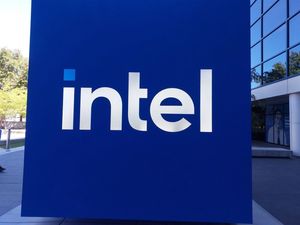
Waynesboro, PA – October 28, 2025 – Franklin Financial Services Corporation (NASDAQ: FRAF), the parent company of F&M Trust, today announced a significant milestone for its shareholders, declaring an increased quarterly cash dividend of $0.33 per share. This positive news coincides directly with the release of the company's strong third-quarter and year-to-date 2025 financial results, painting a picture of robust growth and operational efficiency. The simultaneous announcements signal management's confidence in the firm's sustained profitability and commitment to returning value to its investors, even as the broader financial landscape continues to evolve.
The declaration of a higher dividend, representing a 3.1% increase over the prior year's payout, underscores a period of impressive financial performance for Franklin Financial. The company reported a substantial surge in net income for both the recent quarter and the first nine months of the year, primarily driven by strategic loan growth and an expansion in net interest income. While the overall sentiment is positive, the detailed financial disclosures also highlight areas for investor attention, particularly concerning credit quality metrics within its commercial real estate portfolio, setting a dynamic stage for the company's trajectory moving forward.
Detailed Coverage: A Deep Dive into FRAF's Performance and Shareholder Returns
Franklin Financial Services Corporation (NASDAQ: FRAF) delivered a compelling financial update on October 28, 2025, revealing impressive growth across key metrics for the quarter and nine months ended September 30, 2025. For the third quarter of 2025, the company reported a net income of $5.4 million, translating to $1.19 per diluted share. This marks a notable 26.9% increase compared to the $4.2 million reported in the third quarter of 2024, showcasing accelerated profitability. Net interest income for the quarter also demonstrated strength, growing by 24.2% year-over-year, largely attributed to effective loan growth strategies and an improved yield on earning assets, which stood at 5.39% for Q3 2025.
The year-to-date performance further solidifies this positive trend. For the first nine months of 2025, Franklin Financial achieved a net income of $15.2 million, or $3.39 per diluted share, a substantial 43.1% increase over the same period last year. This growth was fueled by significant asset and loan expansion, with total assets climbing to $2.297 billion and net loans rising 11.8% from year-end. A primary driver of this loan growth was a $101.3 million increase in commercial real estate (CRE) lending. Average deposits also saw a healthy increase, reaching $1.867 billion for the first nine months of 2025, up 17.5% from the prior year. The cost of total deposits, however, saw a slight uptick from 1.81% in 2024 to 1.91% in 2025 for the nine-month period.
In conjunction with these robust earnings, the Board of Directors declared a quarterly cash dividend of $0.33 per share. This dividend will be payable on November 26, 2025, to shareholders of record as of November 7, 2025. The 3.1% increase in the dividend payout reflects management's confidence in the company's ongoing profitability and strong capital position. However, the report also highlighted some credit seasoning within the CRE portfolio, with nonaccrual loans increasing to $10.7 million (0.68% of gross loans) and a specific reserve of $894 thousand allocated to a construction CRE loan and an auctioned hotel loan. These specific details indicate a proactive approach to managing potential risks within a growing loan book, with the company emphasizing its well-capitalized status and solid liquidity.
Market Implications: Winners and Losers in the Wake of FRAF's Announcement
Franklin Financial Services Corporation's (NASDAQ: FRAF) strong performance and increased dividend declaration position it as a potential "winner" in the current financial market, particularly within the regional banking sector. For existing shareholders, the immediate benefit is a higher income stream from the increased dividend, coupled with the potential for capital appreciation driven by positive investor sentiment around the robust earnings report. The demonstrated ability to grow net income, expand its loan portfolio (especially in commercial real estate), and maintain a healthy net interest income spread suggests effective management and a resilient business model in a competitive environment. This could attract new investors seeking stable, income-generating opportunities in the financial services industry.
The company's focus on commercial real estate lending, while contributing significantly to its growth, also presents a nuanced risk profile. While FRAF has successfully expanded in this segment, the noted "credit seasoning" and increase in nonaccrual loans to $10.7 million indicate that this growth is not without its challenges. The allocation of specific reserves demonstrates a prudent approach, but the resolution of these credit issues will be a key determinant of the company's continued success. Other regional banks, particularly those with similar loan concentrations, might view FRAF's performance as a benchmark, or potentially as a cautionary tale if the credit quality concerns escalate. Those regional banks struggling with deposit growth or net interest margin compression might find themselves at a disadvantage compared to FRAF's reported success in these areas.
In a broader sense, the financial health of regional banks like Franklin Financial Services Corporation (NASDAQ: FRAF) is crucial for local economies, as they often serve as primary lenders for small and medium-sized businesses and local real estate developers. A thriving regional bank can lead to increased local investment and job creation. Conversely, any significant downturn in the regional banking sector, perhaps triggered by broader economic headwinds or a deterioration in credit quality across the industry, could have negative ripple effects on local communities and the broader market. For now, FRAF's positive report suggests a healthy regional banking environment, but the watchfulness over credit metrics remains paramount for all stakeholders.
Wider Significance: Navigating a Complex Regional Banking Landscape
Franklin Financial Services Corporation's (NASDAQ: FRAF) strong third-quarter 2025 results and increased dividend declaration are particularly noteworthy when viewed against the broader backdrop of the regional banking sector. In 2025, regional banks are navigating a complex economic environment, characterized by expectations of double-digit annual earnings growth, a steepening yield curve, and potential easing of regulatory burdens under a new U.S. presidential administration. FRAF's reported 26.9% year-over-year increase in net income and its 24.2% growth in net interest income align with these positive industry projections, signaling that well-managed regional institutions can thrive by optimizing loan activity and diversifying revenue streams, such as its 8.0% increase in wealth management fees. The decision to raise its dividend also resonates with expectations of increased capital returns to shareholders across the U.S. banking sector in 2025 and 2026.
However, FRAF's performance also highlights a critical divergence within the regional banking space: exposure to commercial real estate (CRE). While CRE lending was a significant driver of FRAF's 11.8% loan growth, the sector as a whole faces "heightened uncertainty" and "significant pressure" due to growing concerns over bad loans in this segment. Regional banks are disproportionately exposed to CRE, with such debt constituting approximately 44% of their total loans. Specifically, office properties are struggling with declining valuations and demand due to remote work trends, pushing delinquency rates to levels nearing the 2008 peak. Over $1 trillion in CRE loans are projected to mature by the end of 2025, creating substantial refinancing hurdles across the industry. FRAF's acknowledgment of "concentrated stress" within its own credit metrics, with nonaccrual loans rising to $10.7 million, underscores that even strong performers are not immune to these systemic challenges.
The ripple effects of FRAF's robust performance could be multifaceted. For competitors in its south-central Pennsylvania and Washington County, Maryland operating regions, FRAF's success might intensify competition for deposits and quality loan opportunities, potentially spurring other institutions to enhance their offerings or consider strategic mergers and acquisitions for scale. Conversely, banks with higher CRE exposure and weaker performance might face increased scrutiny from investors and depositors, leading to a further divergence between resilient and struggling regional banks. On the regulatory front, while a "friendlier" environment under a new administration may ease some burdens, scrutiny on regional banks with significant CRE portfolios is unlikely to abate. Regulators will continue to emphasize robust risk management, sound underwriting, and effective insolvency frameworks, making FRAF's proactive management of its identified CRE stress a key area for ongoing monitoring.
Historically, the banking sector has faced similar challenges, with the Savings and Loan Crisis of the 1980s and 1990s serving as a stark reminder of the dangers of high interest rates combined with risky CRE lending. More recently, the regional banking turmoil of early 2023 highlighted vulnerabilities from concentrated exposures and interest rate risks. While FRAF's situation is not indicative of systemic risk, its experience with CRE "credit seasoning" serves as a contemporary reminder of these enduring vulnerabilities. The current interest rate environment, characterized by projected Federal Reserve rate cuts in 2025 but still elevated rates compared to the past decade, presents a mixed bag. Lower rates could reduce borrowing costs and improve the lending backdrop for banks, but the "higher-for-longer" scenario continues to pressure weaker, interest-rate-sensitive borrowers, particularly those facing CRE loan refinancing. FRAF's ability to maintain strong performance and increase its dividend amidst these crosscurrents suggests effective navigation, but its concentrated CRE exposure remains a critical watchpoint for the industry.
What Comes Next: Navigating Growth Amidst Emerging Challenges
In the short term, Franklin Financial Services Corporation (NASDAQ: FRAF) is well-positioned to leverage its strong Q3 2025 momentum. The anticipated interest rate cuts by the Federal Reserve in late 2025 could further benefit the company's net interest margin, assuming deposit costs respond favorably. FRAF's robust loan growth, particularly in commercial real estate, indicates sustained demand, which the company can continue to pursue with diligent risk management. The increased dividend payout also enhances FRAF's appeal to income-focused investors, potentially providing near-term support for its stock price. An immediate priority for the company will be the effective management and resolution of the identified stressed CRE loans, including the auctioned hotel loan expected to settle in Q4 2025, to prevent any further deterioration in asset quality.
Looking further ahead, FRAF's long-term trajectory will be shaped by strategic pivots in response to evolving market dynamics and the broader economic landscape. While CRE has been a significant growth engine, the company may consider diversifying its loan portfolio to mitigate concentration risk, perhaps by expanding into residential mortgages (which could see increased demand with lower rates) or specialized commercial and industrial (C&I) lending. Another strategic focus could be enhancing non-interest income streams beyond its already growing wealth management services, by exploring new fee-based offerings or digital solutions to reduce reliance on interest income. Investing in technology for operational efficiency and an improved customer experience will also be crucial for maintaining a competitive edge in the regional banking sector.
Market opportunities for FRAF include the accelerating trend of mergers and acquisitions (M&A) within the regional banking sector in 2025, driven by regulatory shifts and the pursuit of scale. FRAF, with its solid capital position, could emerge as an attractive acquisition target or strategically seek smaller institutions to expand its geographic footprint or service offerings. A potentially "friendlier" regulatory environment under a new U.S. presidential administration could further support M&A activity and reduce compliance burdens. However, significant challenges remain, primarily FRAF's substantial CRE exposure. The continued impact of remote work on office properties and the need for refinancing a large volume of maturing CRE mortgages at higher rates in 2025 could lead to increased delinquencies across the sector. FRAF's ongoing ability to manage its existing CRE portfolio and generate successful workout proceeds will be paramount.
Several scenarios could unfold for Franklin Financial. An optimistic scenario sees FRAF continuing its growth trajectory, successfully integrating acquisitions, diversifying its portfolio, and benefiting from a soft landing in the CRE market and sustained economic stability, leading to further dividend increases and stock appreciation. A moderate scenario suggests stable performance with prudent risk management, where FRAF focuses on organic growth and operational efficiencies, maintaining its strong capital position but without aggressive M&A. Conversely, a challenging scenario could involve a sharper-than-expected economic slowdown or a more significant downturn in specific CRE segments, leading to increased nonaccrual loans, pressure on profitability, potential dividend cuts, and a decline in valuation. FRAF's adept navigation of these possibilities, particularly its proactive approach to CRE risk management and strategic diversification, will be key to its sustained success in the coming years.
Wrap-up: A Strong Showing with Strategic Vigilance Required
Franklin Financial Services Corporation's (NASDAQ: FRAF) announcement of a higher dividend coinciding with robust third-quarter and year-to-date 2025 results paints a largely optimistic picture for the regional bank. The significant increases in net income and net interest income, driven by strategic loan growth and effective asset management, underscore a period of strong operational performance. The 3.1% dividend increase signals management's confidence in the company's financial health and its commitment to delivering shareholder value, positioning FRAF as a notable performer in a competitive market.
Moving forward, investors should closely monitor FRAF's continued management of its commercial real estate (CRE) portfolio. While CRE lending has been a key growth driver, the acknowledged "credit seasoning" and rise in nonaccrual loans highlight an area requiring strategic vigilance, especially given broader industry concerns about CRE exposure among regional banks. The company's ability to successfully resolve these specific credit issues and maintain overall asset quality will be critical for sustaining its growth trajectory and profitability.
The broader market for regional banks in 2025 is characterized by both tailwinds, such as anticipated earnings growth and potential M&A opportunities, and headwinds, particularly the ongoing challenges in the CRE sector. FRAF's performance suggests it is effectively navigating this complex environment. Its strong capital position and proactive approach to risk management, coupled with potential strategic diversification and efficiency improvements, will be vital for long-term resilience. Investors should watch for any further developments in FRAF's credit metrics, its strategic responses to market opportunities and challenges, and the broader economic and regulatory shifts that will continue to shape the regional banking landscape in the months and years to come.
This content is intended for informational purposes only and is not financial advice






